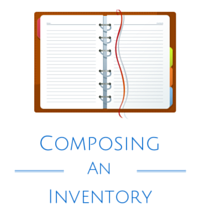Composing an Inventory

Even if your tenants have been absolutely perfect and treated your property with the utmost of respect, it’s still possible that there will be minor damages to your property that you’ll want to charge for from your deposit.
As such, you’ll need a good inventory which can provide details on what items may be missing or damaged upon return of the property. It should be unique to each property and signed off by both landlord and tenant before the tenancy begins. With inventories there’s absolutely no way to shortcut it, you’ve just got to put in the work and figure out what needs to go in. Here’s a simple way of structuring an inventory to make sure you can fit in everything you need.
Why Keep an Inventory?
The simple reason for keeping an inventory is that it will almost certainly save you money in the event of damages or missing items upon return of your property. The law now states that landlords must return tenants’ deposits in full within ten working days, and tenants under the deposit protection scheme may formally challenge any deductions from the deposit.
The law is very much on the side of the tenant when it comes to inventories, and as a landlord you need to justify every deduction you make, rather than the other way around. This means you need good evidence of the condition of your property before your tenants moved in and, ideally, agreement from your tenants that it was in such a state.
Fixtures and Fittings
Most landlords will start an inventory with large pieces of furniture they’d least like to lose or see damaged. Sofas, televisions, dining tables, beds and mattresses are some of the first items that need to be included, and it’s often a good idea to also include information concerning the brands and condition of each item.
It might also be worthwhile noting a price if the item is new, as this allows you to be very clear with your tenants about the cost to them if they were to damage your property. Often, seeing that the prices of these items are well in excess of the standard deposit means you can guarantee a little extra respect from your tenants.
Building Condition
Alongside large items of furniture, you should detail the condition of walls, skirting boards, ceilings and any other building work that might be damaged. You should accompany your inventory with photos in each case, making particular note of any damages that are already there.
Damages to your interior are extremely common, but so many landlords fail to keep a real record of what the condition of the property was like before their tenants arrived. It’s a simple case for a tenant to claim that the damages were not made any worse and, unfortunately, if the landlord has no evidence to the contrary it’s unlikely you’ll be able to make a deduction.
Smaller Items
It’s not necessary to detail every tiny item in your inventory, and it’s inevitable that small things like cutlery or crockery will move between tenants and may even become ‘house’ possessions. In this situation, most landlords choose not to include these items in their inventories for the simple reason that it removes the risk and responsibility for tenants.
If, however, you would like to include these items in your inventory you may do so, but you will have to formalise a procedure for issuing replacements. You don’t want your tenants ringing up every time they break a glass, so it may be worth including a replacements policy.
Agreeing the Inventory
Most landlords find it convenient to allow their tenants three or four days after moving in to have a look around and agree with the inventory. This also allows them a chance to identify any damages you may have missed when preparing the property, and can also be a chance for them to ask you to remove any items that they don’t want – particularly if there are young children around.
Once you’re both happy with the inventory make sure your tenants sign and date it and then you can exchange copies. You can do this online if you don’t wish to print out what can often be a very bulky, colourful document, but make sure you have some form of written confirmation from your tenants.
Your inventory should be considered an essential part of your contract and you need to make sure that your tenancy agreement specifically makes reference to the signed and dated copy. Keep it safe and don’t be afraid to check back if there’s a dispute over damaged property.


